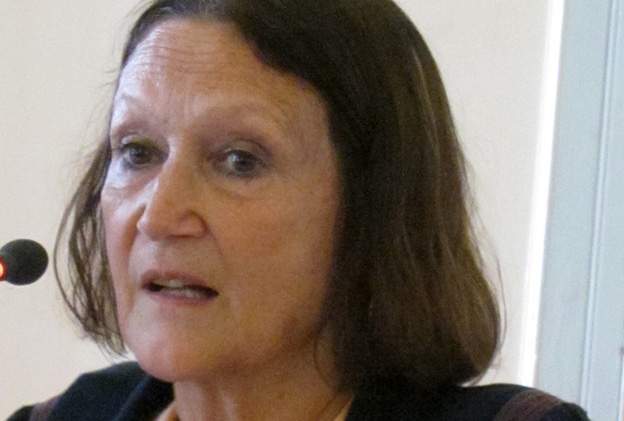
When Julia Baird was growing up in Liverpool, England in the '50s and '60s, she said, every schoolboy wanted to play rock 'n' roll. And for those boys' younger sisters, it amounted to status, to cool points.
Baird says, "Everyone who had a brother, you wouldn't say, 'Is he in a group?,' you'd ask, 'What does he play in his group, and does he sing?' So, my brother played the guitar and was the lead singer."
But instead of taking up a trade or going to a university, Baird's big brother kept playing music, and began recording, and touring. "And it became obvious that they were going places at that point," says Baird. "So we had in my school – it was just a girls' grammar school – we had a notice board devoted to what John was doing at that time."
The John to whom Baird is referring is her half-brother, John Lennon. They were six years apart in age and shared a mother, Julia Lennon.
"I don't remember a life without John in it," she says. "Because of the difference in the years, he was always in my life from the beginning."
But they were raised separately. After John Lennon was born, his parents split. Julia Lennon remarried and had two girls, including Julia Baird. John Lennon, meanwhile, went on to spend most of his childhood in the care of Julia Lennon's loving but stern sister, known in Beatles lore as "Aunt Mimi."
Growing up, Lennon and Baird saw each other mostly on overnight visits and the occasional family vacation. They lost touch for a while. In the meantime, he and his wife Cynthia had a baby, and a new house in London for which he had paid the princely sum of 20,000 pounds – and had become the eye of the Beatles hurricane. At that point, in 1964, Lennon reconnected with Baird and her sister.
"We went to the Finsbury Park Astoria Christmas show," Baird recalls, "which was, apart from A Hard Day's Night, the biggest thing we'd been to to date. That was absolutely crazy. We realized then they were getting bigger than big. The Rolling Stones were in the dressing room with us, and it was a hugely different atmosphere than at home in Liverpool."
On the night of that show, it was clear to John Lennon's sister that his life and hers had diverged. He was 24 and living a rock star's life. She was a 17-year-old schoolgirl in need of a chaperone.
Baird says, "They all went out to celebrate, and he sent Cynthia home with 'the girls' because obviously they were going to be drinking and dancing on tables, and we weren't allowed to go. So he was quite authoritarian with us, in a kind way … But we were very young, you know. Very young."
As they moved through life, Lennon and Baird continued to interact, if in a somewhat glancing way. They last spoke a couple of years before his murder in 1980, an episode in her life Baird continues to decline to discuss.
Julia Baird has lived her own, mostly private life, working for years as a special needs teacher and school psychologist. But, in the last 15 years, she has become more willing to celebrate her proximity to a legend. She has worked to preserve and promote the Cavern Club, the Liverpool venue where The Beatles were discovered. She became the director of Cavern City Tours, which ferries visitors from around the world to Beatles-related sites in Liverpool such as Penny Lane and Strawberry Field. And, in 2007, she published a book, Imagine This: Growing Up with My Brother John Lennon, which she says she did to set the record straight.
"The family story is nothing to do with anybody else, is it?" says Baird. "If you go out and write it, there has to be a good reason for it, to let everybody know the skeletons in your cupboard, in your family's cupboard. We spend lifetimes trying to keep them in the cupboard, don't we? And I've opened all the doors. And that's because John did become famous, so all the wrong stories, many of them blatant lies, were being published as if they were the truth.
"My mother never gave John to Mimi. Mimi took John from my mother, viciously. And in order to defend my mother, I wrote the book."






